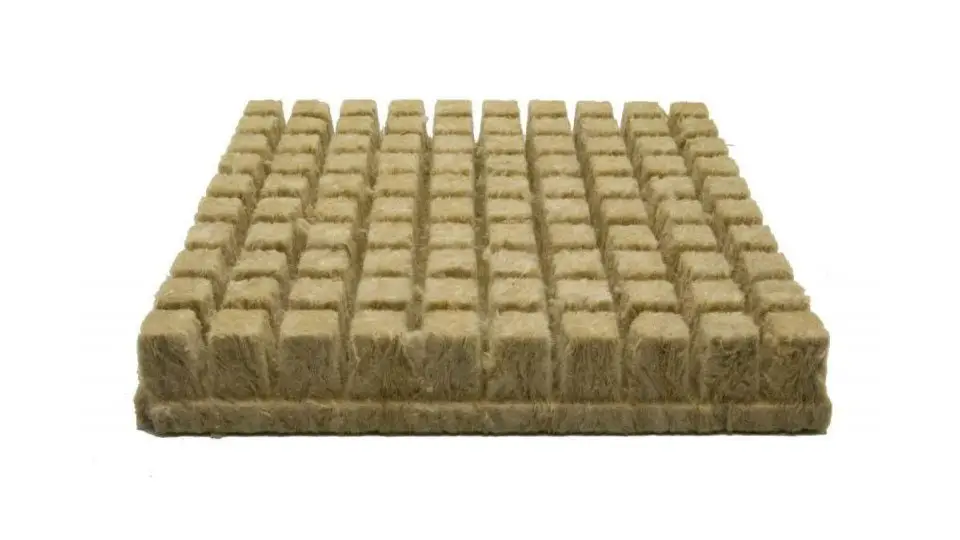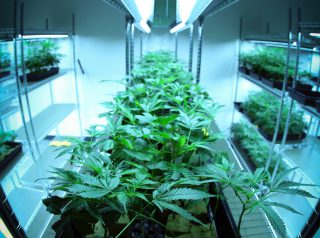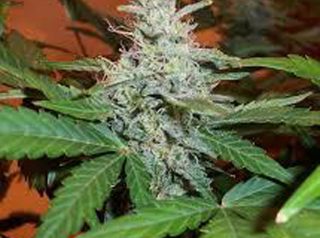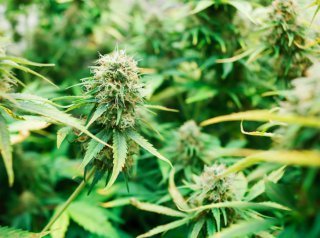Marijuana plants develop from a seed. What some people deem to be a seemingly unimportant nugget is a delicate foundation of your future bud-producing gem. Thus, as with any stage in the growing process, sufficient attention should also be given to choosing, storing, and germinating seeds.
Page Content
Choosing Good Seeds
Choosing cannabis seeds can be an intimidating task, especially for beginners. Along with the thrill, there is the lack of knowledge about which seeds to choose. Procuring seeds that are not suitable for growing could have a negative impact on the harvest. Thus, picking the right seed is vital to obtaining a healthy and viable batch.

Avoid
The first step to acquiring good seeds is avoiding bad ones.
- Young seeds. If it is tinted white, pale green, or yellow, it is not mature enough for germination.
- Old seeds. Generally speaking, cannabis seeds have a 99% germination rate for the first five years. Over time, it becomes increasingly difficult to germinate the seeds. This is especially true for old seeds that have been stored in less than ideal conditions.
- Bagseed. Growing cannabis from a seed found in a bag of weed may not be the brightest idea. Bagseeds are, more or less, a sign that the female plant has been fertilized, a genetic disorder, instability, hermaphroditism, or that it was stressed due to a temperature spike in its growing environment. Although some are lucky, it is better on the safe side and buy a pack of seeds from a reputable seed company.
Examine
The next step when shopping for seeds is to look for markers that indicate its viability.
- Shape & Size. Good seeds are commonly shaped like a teardrop with an average size of about 1/8 inch in width and 3/16 inches in length.
- Toughness. Viable seeds are also firm to the touch. If they chip or crumble when you give them a slight pinch, it means that they are not viable and have to be discarded.
- Color. Healthy cannabis seeds are dark in color with typical varieties ranging from deep brown to almost black with spiral patterns or stripes.
- Sex. Cannabis plants have sexes which can either be male or female. Between the two, however, only the latter produces the highly sought-after resinous buds. Always choose packs labeled as ‘feminized.’ Although a little higher in price point, it guarantees an all-female batch. Seed packs labeled as ‘regular’ often come produce a batch with at least 50% males which could fertilize the females, leading to seed production instead.
Test
The best way to truly know if a seed is viable is testing them. This is easy and only requires a glass of water.
Once you obtain the seeds, drop the seeds in a glass of water. Good seeds will sink while seeds that stay on top are likely to be poorer in quality. Make sure to give the seeds enough time, about one to two hours, to absorb the moisture since some viable seeds may not sink immediately.
Take note though that this procedure should only be done immediately before germination.
Germinating Seeds
Germination is the process where your plant’s life cycle starts. The seed sprouts to form a seedling which grows into a mature plant. It is also during this stage that it develops a taproot from which all other roots spring from.

To germinate, seeds only need three things – air, water, and heat. Because of how easy it is to create and provide these conditions, growers have developed various germination techniques, each with their own advantages and drawbacks.
Paper Towel Method
The paper towel method is one of the most common ways to germinate seeds. The material involved is also cheap and easily accessible. If you want to use this technique, purchase single-ply paper towels as the roots may grow into the thicker, cloth-like ones.
Materials:
- Cannabis seeds (preferably feminized)
- Paper towels
- Ceramic plate
Procedure:
- Douse four sheets of paper towels with water until it is moist to the touch, but not dripping.
- Place two of the damp paper towels in a ceramic dish or plate.
- Position the viable seeds on top, at least ½ inch apart from each other, then cover with the two remaining sheets of moist paper towels. Remove excess fluid if needed.
- Cover the seeds with another plate. This creates a moist and dark environment necessary for the seeds to germinate.
- Place the plates in a warm area with a consistent temperature of about 21-29°C (70-85°F) away from direct sunlight. A heat lamp would be useful for this purpose.
- Check the seeds a few times daily. If the paper towels start to dry out, spritz them with water to keep them moist.
- If the seed splits and the sprout reach up to ¼ to ½ inch long, then it is ready for transplanting.
Viable seeds usually open after 48 to 72 hours while others take at least 10 to 14 days to split up. Any seed that remains closed after this duration should be discarded.
Rockwool Starter Cubes Method
Rockwool starter cubes is a favorite among hydroponic growers. It is made of fibrous material that facilitate water and air exchange better than paper towels. And once the seeds have sprouted, it can be directly moved into the media without stressing the young plant.

Germinating seeds with rockwool cubes is quite easy, however this method requires the additional step of balancing out the pH to make it suitable for cannabis seeds. Rockwool is also dusty so it is recommended to wear a mask, goggles, and gloves when handling the unrinsed material.
Materials:
- Cannabis seeds (preferably feminized)
- Bowl
- Water
- pH meter or pH test strips
- pH down chemicals (citric acid, white vinegar, lime juice)
- Set of 1-inch rockwool cubes
- Waterproof tray
- Toothpick, clean nail, or any sharp objects
- Tweezers
- Clear plastic dome or saran wrap
- Spray bottle or plastic bottle with lid
- 40-watt fluorescent light
- Thermometer
Procedure:
- Fill the bowl with reverse water. Ensure that the pH range is around 5.5 to 6.5, the optimal range for growing cannabis. Tap water usually has a pH of 7.4 and, as such, would need pH down chemicals like citric acid, white vinegar, and lime juice to lower it to the optimum range.
- Immerse the rockwool cubes in the water and leave it for an hour.
- Remove the cubes from the bowl. Drain the excess water and pour it in a separate bottle. Put the cubes on top of a waterproof tray.
- Poke a hole that is wide enough for a seed to fit in the middle of the cube with a pointy object such as a toothpick or a clean nail if it does not have one already.
- Place one seed in every hole and push it down the bottom with a toothpick or tweezer.
- Cover the hole with a small piece of excess rockwool to provide a dark and damp environment for the seeds. Further sustain the moisture and warmth by placing it inside a plastic dome or wrapping it with saran/cling wrap.
- Place the tray 2 to 3 inches under a 40-watt fluorescent light. Leave the light on for 24 hours.
- Monitor the temperature. Place a thermometer inside the tray and ensure that it is anywhere between 21-29°C (70-85°F). Try to check the cubes at least 2 to 3 times a day. If needed, moist them with pH-balanced liquid from the spray.
- Continuously monitor the seed until it splits and a sprout appears.
- Transfer the seedling to its permanent medium. There is no need to remove it from the starter cube.
Direct In Soil Method
Directly germinating in soil is the most natural way of growing cannabis. It is a great technique that guarantees minimal stress to delicate seeds. Thus, it not only eliminates the risk of damaging the tendril – which usually happens during transplantation. Not to mention, seeds sowed in soil have a head start since it does not need time to adjust to the final medium.

Materials:
- Cannabis seeds (preferably feminized)
- Soil mix
- Peat cups
- Waterproof tray
- Clear plastic dome or saran wrap
- 40-watt fluorescent light
- Thermometer
Procedure:
- Fill the peat cups with the soil mix.
- Poke a ¼ inch hole in the middle of the soil with a finger.
- Drop a single seed and loosely cover it with soil.
- Put the peat cups in the waterproof tray.
- Water the soil with a pH-balanced solution. Stop watering once the liquid starts flowing outside the cups.
- Cover the tray with a clear plastic dome or saran/cling wrap.
- Position the tray 2 to 3 inches under a 40-watt fluorescent light.
- Check the temperature using a thermometer. It should be around 32°C (90°F) which is the ideal temperature for germinating seeds in soil.
- For the next 24 hours, routinely check on the seeds. Ensure that it is within the right temperature and keep it moisturized but not wet. Use pH-stabilized water.
The sprout should develop within that time span.
Storing Seeds
Cannabis seeds are resilient little pods of life. It could be dried and, rather than risking instability, it would enter into a dormant phase instead. As such, it is the perfect candidate for long-term storage.
Most cannabis seeds could last 5 years and would not lose viability. Some growers have even found success germinating a 10-year-old seed. Keep in mind, however, that a seed’s germination rate deteriorates the older it gets. Other times, it might not even sprout at all.

The secret to keeping seeds viable lies in its container as well as environment. Optimizing both key factors will ensure that leftover seeds for the season or a stash for a later cultivation schedule sprouts when it is finally germinated.
Container
Seed packs often come with vacuum seals and moisture controls like a mylar bag containing a desiccant. There is good reason for this. When storing cannabis seeds, the objective is to find a container that reduces its exposure to elements – heat, oxygen, light, and moisture – that germinate it.
Growers may keep the containers that come with seed packs and use it for storage. But, if these are no longer available or have been thrown away, there are other options. At-home vacuum sealers, for instance, will be useful for storing for an extended duration.
Another alternative is an airtight container. Preferably, both the body and lid should be glass with an opaque coating. Plastic and metal containers are not advisable since these materials permit light or moisture and are easily affected by temperature fluctuation, potentially exposing the seeds to heat. For this reason, using Ziploc bags is also not recommended. Glass containers, on the other hand, are suitable for both long- and short-term storage.
Environment
The next step after picking a container is creating the perfect environment that will preserve quality and extend its life expectancy.
Reduce Light Exposure
One of the main factors that can instigate premature germination is exposure to light. So, it is best to keep seeds in a dark area that is away from direct sunlight or any source of illumination.
To decrease the risk of subjecting your seeds from brightness, avoid opening the container or handling the seeds unless it is time for cultivation. Labeling different strains is also highly suggested. It could minimize further disruptions by preventing growers from opening the container.
Manage Temperature
The ideal temperature for storing seeds is around 5-8°C (41-46°F) which could be achieved through the refrigerator or freezer. Still, growers can store it at room temperature.
- Room Temperature. If the seeds will be planted soon, it can be kept at room temperature inside a cool and dark area like a closet or cupboard. It can last for up to a year. However, when stored in a place where the temperature often changes (near radiators or heating appliances), it can easily lose its viability.
- Refrigerator. For prolonged storage, it is best to keep the seeds in the fridge. The fruits and vegetable crisper section holds the best temperature and humidity. Preferably, it should be separate from the fridge used to store food to minimize the fluctuations in temperature that happen when opening or closing the refrigerator. Alternatively, it could also be placed them at the backmost part of the fridge to keep the change in temperature to a minimum.
- Freezer. Contrary to common belief, the freezer is the least recommended location for the seeds because it exposes them to an abrupt decrease of temperature. However, you can still safeguard the seed’s viability while in the freezer by putting it in an airtight container with a food-grade desiccant satchel. Freezing, however, runs the risk of not just tampering with its germination rate. It is still possible to increase germination success by letting the seeds sit at room temperature. On another note, a defrosted seed should never be placed back inside the freezer as it will only damage it.
Remove Humidity & Moisture
Marijuana seeds pull moisture from the atmosphere to germinate, but dry out when there is little to no humidity. Placing the seed in a dry environment doubles its storage life for ‘every 1% decrease in moisture content.’
The ideal humidity that will guarantee the longevity of your seeds is between 2-3%. Anything above 10% not only provides a condition where it can germinate but also spurs mold and fungal development. Keeping it low, but not completely dried out will maximize its preservation.
One great way to achieve this is by adding a desiccant. These are small bags filled with substances absorb moisture in the air which are commonly found inside newly bought shoeboxes, jewelry, bags, and toolboxes. Placing these inside the seed container, separated by papers or cotton balls, will reduce the humidity.
Rice is also an effective desiccant; however, it must be replaced from time to time.
Ensuring Farming Success From The Start
Supplying sufficient light, hydration, and nutrients throughout a cannabis plant’s life cycle remains the most important aspect of growing. However, no one can deny the effect of starting with a good quality seed. Picking the best seeds for a garden makes the growing process easier by reducing stress for both the plant and the grower.





